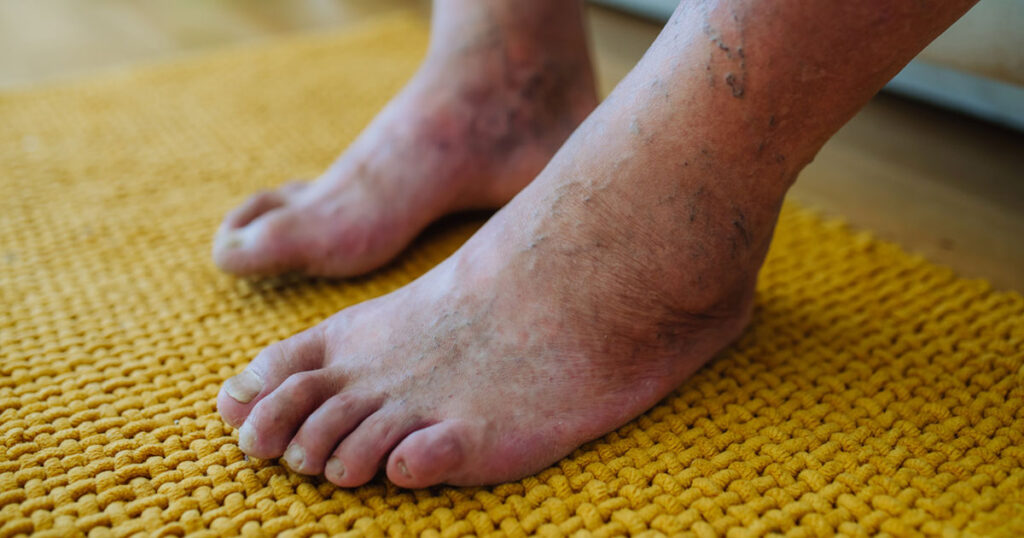ABSTRACT:Over last few years the incidence rate of lifestyle diseases, especially vascular diseases has drstically increased and current Worldwide the prevalence rate of VARICOSE VEINS varies between 10-30% of the population. Varicosity is said to be the penalty for verticality against gravity. Varicose veins are defined as Dilated, tortuous and elongated superficial veins of the limbs. Varicose veins occure ore commonly in women than men and the ratio is 3:1 ; symptoms are often aggrevated by pregnancy. Most of the varicosities are accqired but rarely it is found to be congenital as well. INTRODUCTION:There are various causes for accquired varicose veins, in which, occupation and obesity plays very important role. Other causes are Pregnancy and pelvic tumours, Congenital causes are congenital weakness in the vein wall due to defective connective tissue and smooth muscle.It can also be due to muscular weakness or due to congenital absence of valves in veins, Klippel-Trenaunay syndrome etc. Primary varicosity can also be genetic. Exaination and diagnosis of the varicosity include thorough local examination and it reveals bluish, blackish discoloration with visible dilated veins. Diagnostic imaging include venous doppler. It should always kept in mind that Pain due to varicose veins is relieved on exercise in contrast to pain due to arterial diseases, which get worse on exercise.TREATMENT:Varicose veins is a surgical disease and should not be delayed unless and until patient is unfit for surgery, to avoid further complications of varicosity. Earlier striping off the affected vein used to practiced worldwide as the priary …
Varicose veins – Recent Advancements in Treatment
ABSTRACT:
Over last few years the incidence rate of lifestyle diseases, especially vascular diseases has drstically increased and current Worldwide the prevalence rate of VARICOSE VEINS varies between 10-30% of the population. Varicosity is said to be the penalty for verticality against gravity.
Varicose veins are defined as Dilated, tortuous and elongated superficial veins of the limbs. Varicose veins occure ore commonly in women than men and the ratio is 3:1 ; symptoms are often aggrevated by pregnancy. Most of the varicosities are accqired but rarely it is found to be congenital as well.

INTRODUCTION:
There are various causes for accquired varicose veins, in which, occupation and obesity plays very important role. Other causes are Pregnancy and pelvic tumours, Congenital causes are congenital weakness in the vein wall due to defective connective tissue and smooth muscle.
It can also be due to muscular weakness or due to congenital absence of valves in veins, Klippel-Trenaunay syndrome etc. Primary varicosity can also be genetic. Exaination and diagnosis of the varicosity include thorough local examination and it reveals bluish, blackish discoloration with visible dilated veins. Diagnostic imaging include venous doppler. It should always kept in mind that Pain due to varicose veins is relieved on exercise in contrast to pain due to arterial diseases, which get worse on exercise.
TREATMENT:
Varicose veins is a surgical disease and should not be delayed unless and until patient is unfit for surgery, to avoid further complications of varicosity. Earlier striping off the affected vein used to practiced worldwide as the priary surgical treatment for varicose veins. But ut in past few decaded it changed to sclerotherapy and then into LASER ablation or LASER treatement of the affected vein.
SCLEROTHERAPY:
It is indicated for below knee varicosity with history of recurrent varicose veins. sclerotherapy is useful in varicose veins less than 3 mm in diameter. Varicose veins are marked in the standing position. 3% sodium tetradecyl sulphate or 1-2 ml of ethanolamine oleate or hypertonic saline is injected into the column of vein. Aseptic thrombosis occurs and when fibrosis occurs, the vein shrinks. Tight elastic compression bandage is applied. Success of sclerotherapy depends upon effective sclerosant, injection into an empty vein and compression followed by exercise. Foam sclerotherapy is useful in superficial veins. Success rates range from 60 to 90%.
ENDOVENOUS LASER ABLATION (EVLA):
In this procedure The vein is Cannulated using ultrasound guidance. A guide wire is passed into the cannula and then catheter passed over the guide wire. Guide wire is removed and Local anaesthesia is given. Now the LASER fibre is passed through the catheter and ablation of the vein is done. It is a minimally invasive, outpatient procedure using laser fibre to ablate varicose veins. It is followed by Compression bandage and then use of varicose veins stalkings for 6 weeks.
ADVANTAGES :
This gives excellent cosmetic and functional results. Simple, outpatient procedure. It is Ideal for junctional and truncal incompetence. Advantages of this technique include less discomfort of the patient and a more rapid recovery. Healthy patients with no medical history do not even require laboratory work for this procedure.
HYBRID METHOD:
It is combination of LASER ablation for deep veins and sclerotherapy for superficial spider veins. It has given excellent results in patients having long standing varicosities.





